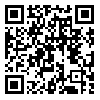Volume 10, Issue 4 (winter 2007)
jwss 2007, 10(4): 481-488 |
Back to browse issues page
Download citation:
BibTeX | RIS | EndNote | Medlars | ProCite | Reference Manager | RefWorks
Send citation to:



BibTeX | RIS | EndNote | Medlars | ProCite | Reference Manager | RefWorks
Send citation to:
M. H. Banabazi, S. Esmaeilkhanian, S. R. Miraei Ashtiani, M. Moradi Shahrbabak. Gentic Variation Within and Between Five Iranian Sheep Populations Using Microsatellite Markers. jwss 2007; 10 (4) :481-488
URL: http://jstnar.iut.ac.ir/article-1-638-en.html
URL: http://jstnar.iut.ac.ir/article-1-638-en.html
Abstract: (24591 Views)
Genetic variation within and between five Iranian sheep populations including Sanjabi (SAN), Kordi Kordistan (KKO), Kordi Khorasan (KKH), Mehraban (MEH) and Moghani (MOG) was assessed using six microsatellite markers (McMA2, McMA26, MAF64, OarAE64, OarCP26 and OarFCB304). The PCR reactions were successfully perfomed with all primers except OarAE64. All locus-population combinations were at Hardy-Weinberg equilibrium except McMA2 in MOG population (P<0.005). Polymorphism criteria showed that the five studied loci were polymorphic in all populations. The lowest DA genetic distance (0.234) was observed between KKH and KKO and the highest (0.388) between SAN and MOG populations. The dendrograms based on DA distances were drawn using unweighted pair-group method using an arithmetic average (UPGMA) and neighbor-joining (NJ) method. KKO, KKH and SAN were grouped together at one cluster and MEH and MOG at another by both methods. The average expected heterozygosity for each populations (as interpopulation variation) ranged from 0.744 to 0.847 for KKH and MEH, respectively. The estimated time of divergence for two Kordi populations (KKO and KKH) was 445 years that complies with historical evidences. The findings of this research confirmed that microsatellite variation could be a useful tool for screening of investigating biodiversity among domestic animals.
| Rights and permissions | |
 |
This work is licensed under a Creative Commons Attribution-NonCommercial 4.0 International License. |





